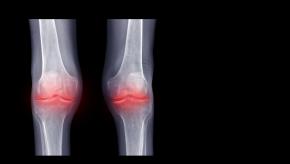News
SLE and Osteoporosis
In one of the SLE sessions at the APLAR 2025 Congress, Prof. Sandra Navarra discussed the assessment and management of osteoporosis in SLE patients, particularly glucocorticoid-induced osteoporosis (GIOP) and this article reviews the highlights and key takeaways from her talk.PAH diagnosis and management in the context of CTD ILD
Pulmonary arterial hypertension (PAH) is a serious complication of connective tissue disorders. Approximately 25% of patients with PAH have an underlying CTD, making CTD-PAH the second most common cause of PAH. During the session on Management of Lung Complications in CTD at APLAR 2025, Prof. Dinesh Khanna and Masataka Kuwana provided an excellent overview of PAH diagnosis and management strategies the context of CTD-ILD.Antifibrotics - A New Class of Therapies in Rheumatology?
Rheumatologists typically manage systemic autoimmune rheumatic diseases (SARD) and associated interstitial lung disease (ILD) with immunosuppressants. However, evidence increasingly supports also the use of antifibrotic agents in this setting.
ERS/EULAR guidelines for CTD-related interstitial lung disease
The European Respiratory Society (ERS) and European Alliance of Associations for Rheumatology (EULAR) have published clinical practice guidelines for the evaluation and management of connective tissue diseases (CTD) associated interstitial lung disease (ILD) in two simultaneous publications in the European Respiratory Journal and Annals of Rheumatic Diseases.COLCHICORT Trial
The COLCHICORT trial in acute calcium pyrophosphate (CPP) crystal arthritis patients showed that colchicine was inferior to prednisone treatment and that responses were also influenced by other factors.APLAR 2025: What’s New in RA Management?
The unveiling of the updated 2025 recommendations for RA treatment, presented by Josef Smolen in the plenary session on the first day of the conference, sparked attention. Although not yet formally published, these updated recommendations represent a refined consensus that simplifies decision-making while reinforcing the importance of treat-to-target principles in RA.Addressing Disparities and Unequal Burdens in ILD
Interstitial lung diseases (ILDs) represent a complex spectrum of conditions that share one unifying truth: they are almost always serious, progressive, and life-altering. But for many patients, the burden of disease does not fall evenly. We are increasingly learning that where you live, who you are, and the resources available to you, can strongly influence how ILD develops and worsens. Understanding these disparities is not about pointing fingers. Rather, it is about uncovering opportunities to deliver better, fairer care.Multimorbidity predicts flares in rheumatoid arthritis
A study from Olmstead county and the Mayo Clinic shows that multimorbidity and social factors predict higher rheumatoid arthritis (RA) flares and lower remission rates.
September to Remember (9.5.2025)
Dr. Jack Cush reviews the news and journal reports from RheumNow. This week - unemployment, diagnosing Sjogren's and a lot of ILD.














